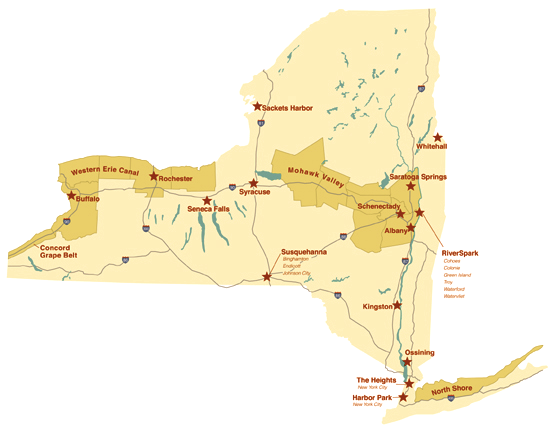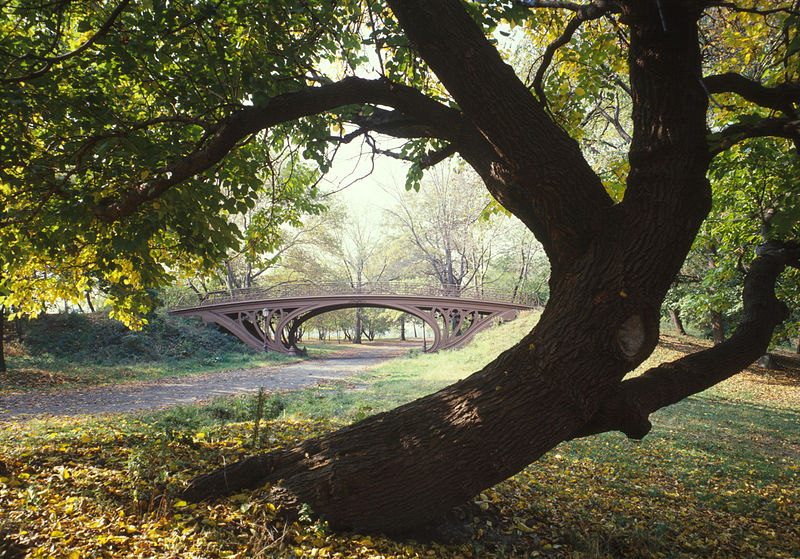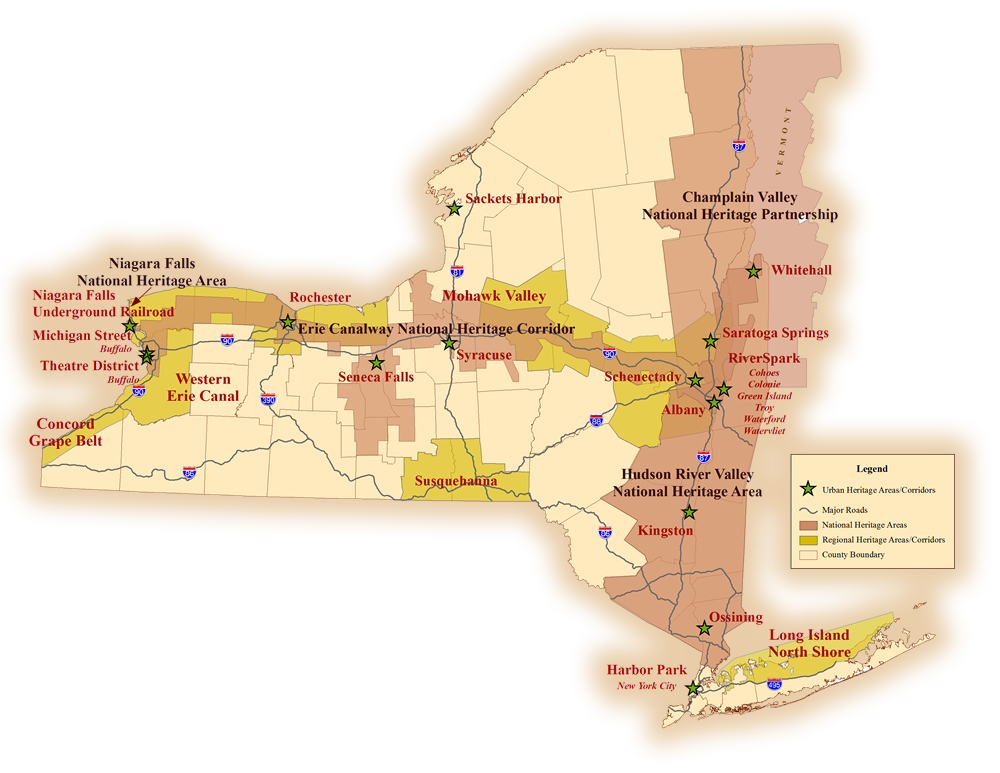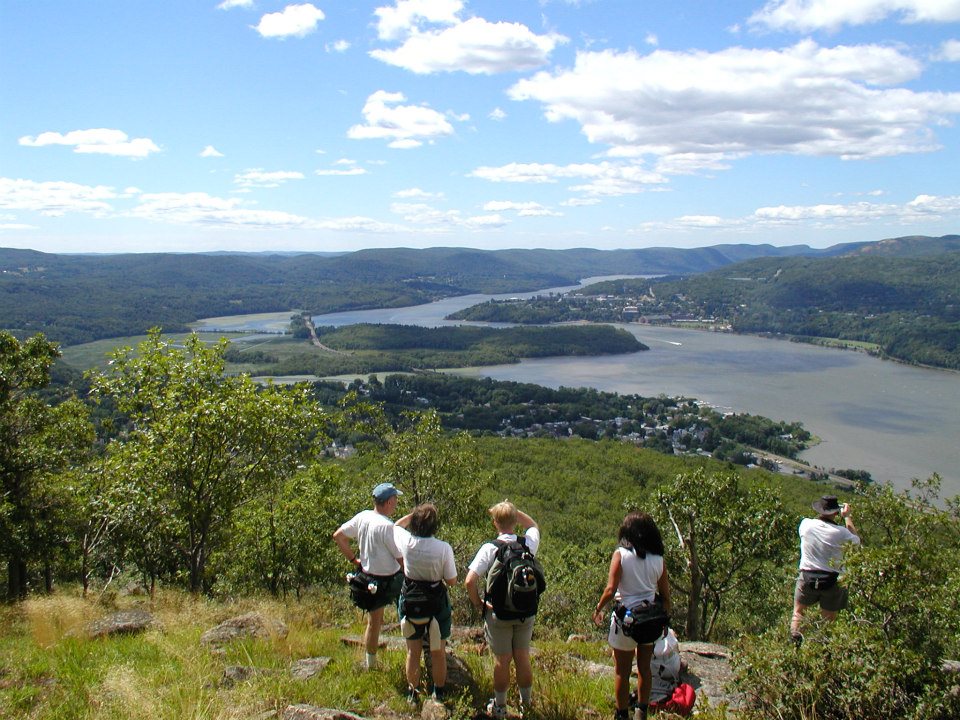To provide observations and information on the emerging fields of landscape scale conservation, heritage preservation, and sustainable community development.
Newsletter
Stay up-to-date with the latest nature, culture and community news.
We won’t spam you or share your information. Newsletters are sent approximately 10 times a year. Unsubscribe at any time.

New York State Parks: Funding Heritage Innovation
Urban cultural parks and heritage areas have a history that now dates back almost four decades, yet they often still struggle to receive adequate and predictable support at the local, state and federal levels. Why do programs so often touted as the future of conservation and preservation receive so little support from agencies and public officials charged with managing their funding?

New York State’s Recreational Areas Deserve Spotlight
New York State has played a pivotal role in shaping the history of conservation in the United States. The Adirondack Park, Central Park, and the Hudson River Greenway, among other sites, have all influenced patterns of protected area management, as did the state’s innovative urban cultural parks (now heritage areas) program.

Help NY State Heritage Areas
New York’s heritage areas are “partnership parks” encompassing public and private interests as well as partnership between state and local government. The first such effort, RiverSpark, dates to 1977, eight years before the federal National Heritage Areas program began to take shape. In recent years, however, the New York effort has suffered from a lack of funding and staff support.
NHA@30: Key Documents 1983 New York Greenline and Urbanline Parks Conference
Interested in the roots of National Heritage Areas? Check out these proceedings from a 1983 conference on greenline and urbanline parks.

A Holistic Approach to Open Space
The Rensselaer Plateau in New York State offers an exciting case study in collaboration, with public and private stakeholders joining together to foster conservation across property lines and political jurisdictions. The plateau is one of 165 conservation initiatives in the Northeast, from West Virginia to Maine, applying “a whole systems, large landscape approach” as part of a project by the Regional Plan Association. Learn more about the origins and outcomes of this model.

New York State Parks: Funding Heritage Innovation
Urban cultural parks and heritage areas have a history that now dates back almost four decades, yet they often still struggle to receive adequate and predictable support at the local, state and federal levels. Why do programs so often touted as the future of conservation and preservation receive so little support from agencies and public officials charged with managing their funding?

New York State’s Recreational Areas Deserve Spotlight
New York State has played a pivotal role in shaping the history of conservation in the United States. The Adirondack Park, Central Park, and the Hudson River Greenway, among other sites, have all influenced patterns of protected area management, as did the state’s innovative urban cultural parks (now heritage areas) program.

Help NY State Heritage Areas
New York’s heritage areas are “partnership parks” encompassing public and private interests as well as partnership between state and local government. The first such effort, RiverSpark, dates to 1977, eight years before the federal National Heritage Areas program began to take shape. In recent years, however, the New York effort has suffered from a lack of funding and staff support.
NHA@30: Key Documents 1983 New York Greenline and Urbanline Parks Conference
Interested in the roots of National Heritage Areas? Check out these proceedings from a 1983 conference on greenline and urbanline parks.

A Holistic Approach to Open Space
The Rensselaer Plateau in New York State offers an exciting case study in collaboration, with public and private stakeholders joining together to foster conservation across property lines and political jurisdictions. The plateau is one of 165 conservation initiatives in the Northeast, from West Virginia to Maine, applying “a whole systems, large landscape approach” as part of a project by the Regional Plan Association. Learn more about the origins and outcomes of this model.


